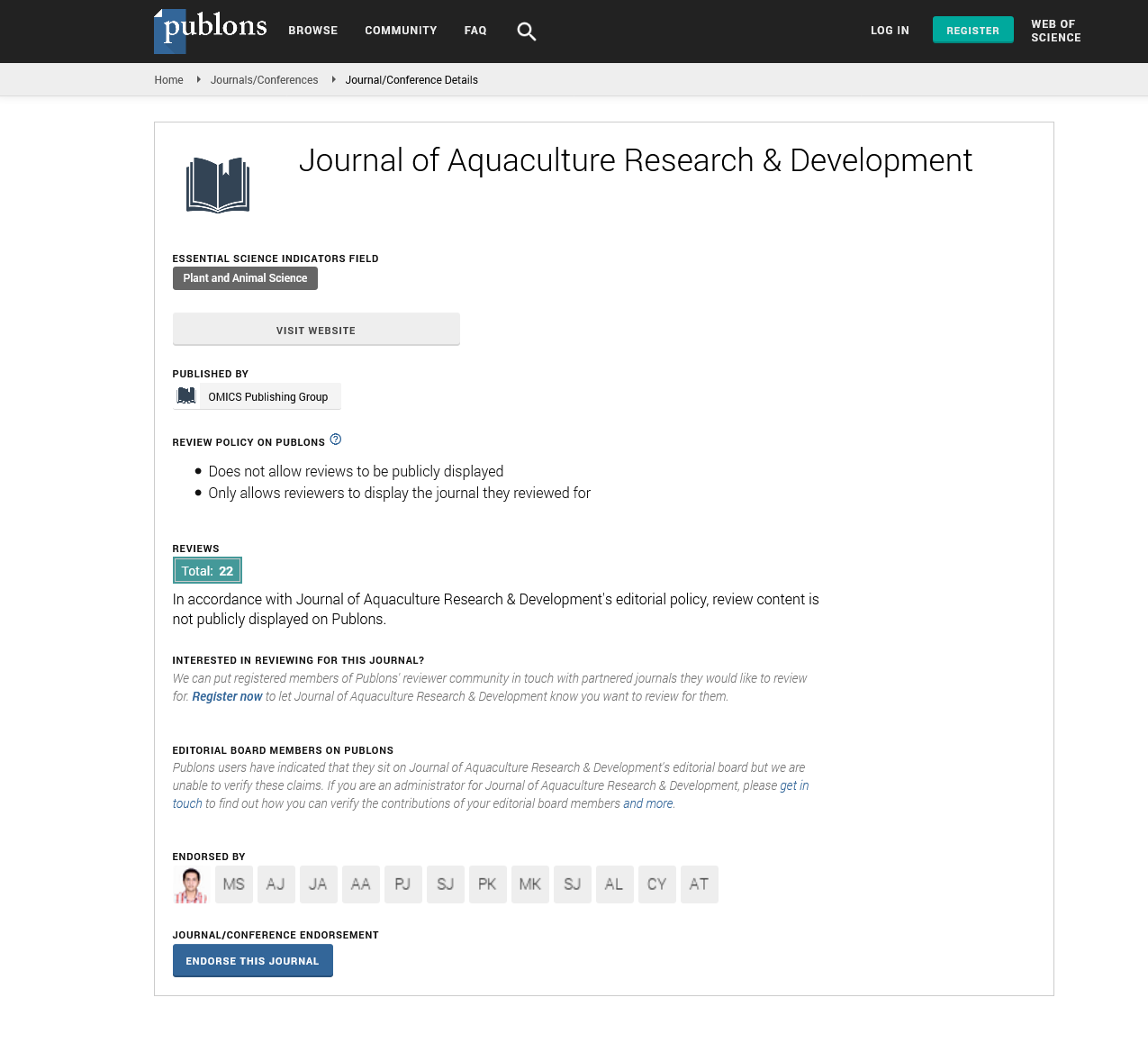Indexed In
- Online Access to Research in the Environment (OARE)
- Open J Gate
- Genamics JournalSeek
- JournalTOCs
- Scimago
- Ulrich's Periodicals Directory
- Access to Global Online Research in Agriculture (AGORA)
- Electronic Journals Library
- Centre for Agriculture and Biosciences International (CABI)
- RefSeek
- Directory of Research Journal Indexing (DRJI)
- Hamdard University
- EBSCO A-Z
- OCLC- WorldCat
- Scholarsteer
- SWB online catalog
- Virtual Library of Biology (vifabio)
- Publons
- MIAR
- University Grants Commission
- Euro Pub
- Google Scholar
Useful Links
Share This Page
Journal Flyer

Open Access Journals
- Agri and Aquaculture
- Biochemistry
- Bioinformatics & Systems Biology
- Business & Management
- Chemistry
- Clinical Sciences
- Engineering
- Food & Nutrition
- General Science
- Genetics & Molecular Biology
- Immunology & Microbiology
- Medical Sciences
- Neuroscience & Psychology
- Nursing & Health Care
- Pharmaceutical Sciences
Commentary - (2025) Volume 16, Issue 1
Innovative Approaches in Sustainable Aquaculture Practices
Johnathan Elric*Received: 01-Jan-2025, Manuscript No. JARD-25-28649; Editor assigned: 03-Jan-2025, Pre QC No. JARD-25-28649 (PQ); Reviewed: 17-Jan-2025, QC No. JARD-25-28649; Revised: 24-Jan-2025, Manuscript No. JARD-25-28649 (R); , DOI: 10.35248/2155-9546.25.16.956
Description
Aquaculture has become one of the most vital contributors to the global food supply, providing a substantial portion of the world's demand for fish, crustaceans, mollusks, and aquatic plants. In recent years, the focus has shifted from mere quantity of production to sustainable practices that ensure long-term ecological balance while meeting the growing demand. Innovative approaches are now being explored and implemented across different regions and environments, aimed at reducing environmental impact, improving fish health, enhancing water quality, and maximizing economic benefits without compromising future resources.
Among the most notable innovations is the development and expansion of Recirculating Aquaculture Systems (RAS), commonly referred to as RAS. These systems allow fish to be farmed in closed-loop environments where water is continuously filtered and reused. This drastically reduces the need for large volumes of fresh water and minimizes discharge into natural water bodies. The ability to control temperature, oxygen levels, and water quality makes RAS suitable for indoor aquaculture, making it feasible to cultivate fish even in urban or landlocked areas. The efficiency and biosecurity of RAS have attracted attention from researchers and investors alike, especially for high-value species such as salmon, trout, and tilapia.
Another breakthrough in sustainable aquaculture is the use of biofloc technology, which relies on the cultivation of beneficial microbial communities within the culture water. These microbes not only convert waste into useful biomass but also serve as an additional source of nutrition for the fish or shrimp being farmed. Biofloc systems reduce the need for water exchange, limit the accumulation of toxic compounds, and decrease feed conversion ratios. Farmers adopting this method report improvements in growth rates and immunity of aquatic organisms, alongside reductions in production costs.
Integrated Multi-Trophic Aquaculture (IMTA) is gaining momentum as a holistic approach to sustainability. This method involves cultivating species from different trophic levels in the same system, such as combining fish, shellfish, and seaweed. The waste produced by fish becomes nutrients for seaweed and filter feeders, creating a naturally balanced environment. IMTA mimics natural ecosystems and allows for better resource utilization, economic diversification, and environmental remediation. Research into the optimization of IMTA systems continues to explore species combinations, system design, and nutrient cycling for various climatic zones and production scales.
Feed formulation is another critical area where innovation is reshaping the sustainability landscape. Traditionally, fishmeal and fish oil derived from wild-caught fish have been staple ingredients in aquafeeds. However, due to concerns over overfishing and cost, researchers are now turning to plant-based proteins, insect meal, algae, and microbial proteins as alternative sources. These novel ingredients not only reduce dependency on wild fisheries but also improve the carbon footprint of aquaculture operations. Studies have demonstrated that when properly balanced, these feeds can match or even exceed the performance of traditional diets in terms of growth, palatability, and health outcomes.
Disease management has always been a significant challenge in aquaculture, particularly in intensive systems where high stocking densities can lead to outbreaks. In response, innovations in vaccine development, probiotic supplementation, and real-time health monitoring tools are revolutionizing the way aquaculture practitioners maintain stock health. Molecular diagnostic techniques allow for early detection of pathogens, while automated sensors track changes in behavior and water quality that may signal disease onset. These technological advancements are reducing the use of antibiotics and supporting a shift toward more natural, preventative health strategies.
Climate change is also driving innovation in aquaculture. With increasing temperatures, fluctuating salinity, and unpredictable weather patterns, researchers are developing resilient breeds of aquatic organisms capable of adapting to these stressors. Selective breeding programs, supported by genomic tools, are enhancing traits such as disease resistance, growth rate, and tolerance to environmental fluctuations. Such genetic improvements not only ensure better yields but also reduce the vulnerability of aquaculture systems to climate-related risks.
Citation: Elric J (2025). Innovative Approaches in Sustainable Aquaculture Practices. J Aquac Res Dev. 16:956.
Copyright: © 2025 Elric J. This is an open access article distributed under the terms of the Creative Commons Attribution License, which permits unrestricted use, distribution, and reproduction in any medium, provided the original author and source are credited.

